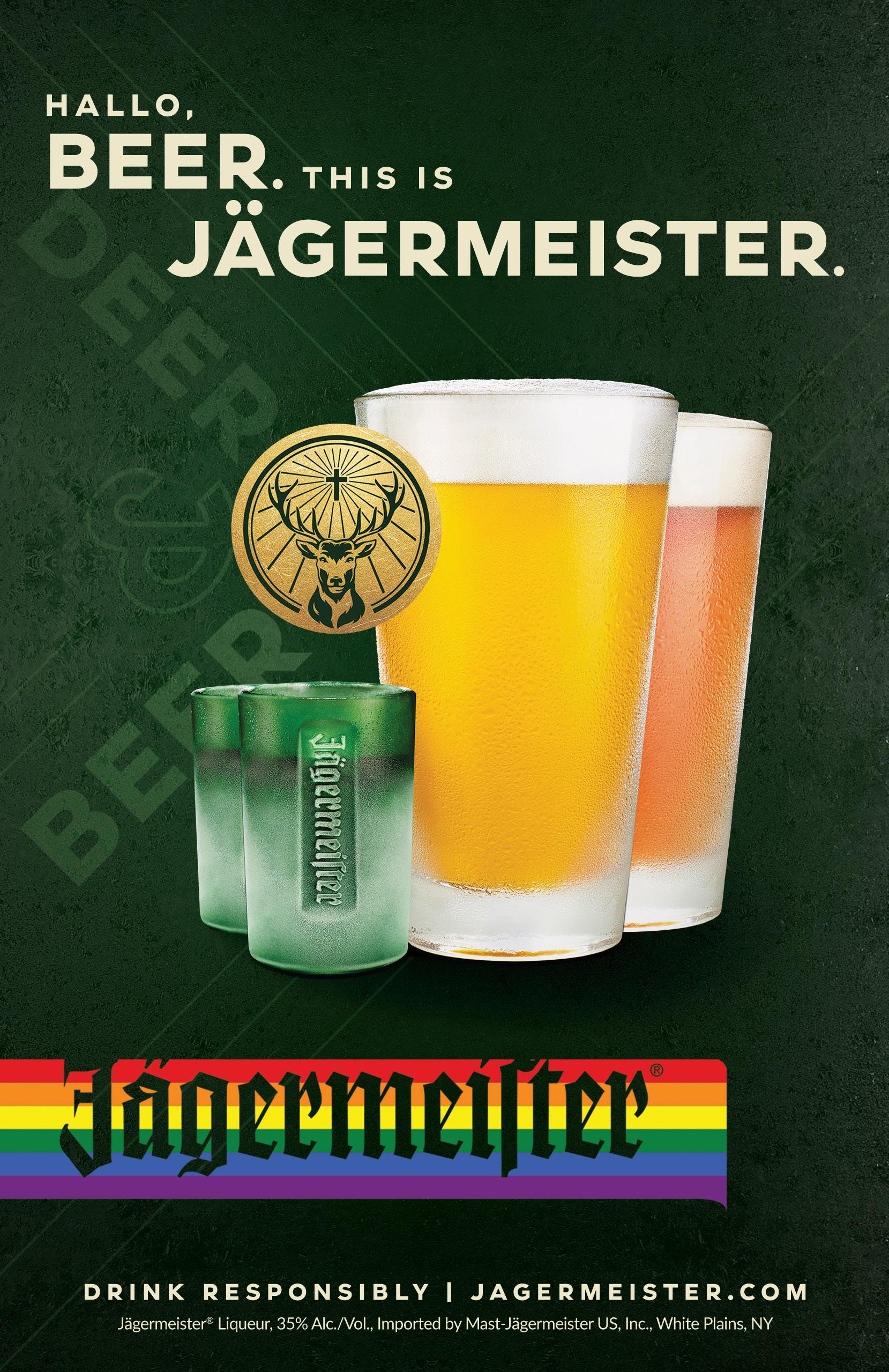






The Weaving Our Cultures Arts Festival (WoCAF) and the Marjorie Barrick Museum of Art are currently presenting the exhibit; Two Cultures, One Family: Building Family, Finding Home.

In this exhibit, Dr. Erika Abad draws on their personal
experience as the descendant of a historically multiracial family to curate a selection of artists who invite us to ask questions about the way ideas around family, gender, sex, and reproductive justice are negotiated today.
Dr. Abad’s curation moves across a wide array of media,
encompassing paintings, sculptures, poetry, textiles, zines, videos, and drawings.
Their themes range from reproductive genocide to the choices that LGBTQ+ American families are forced to make now that numerous states are pushing for transand homo- antagonistic legislation.

Fab Las Vegas magazine had a chance to connect with Dr. Abad to ask some questions and to learn more about this exhibit available to the general public free of charge until January 28, 2023.
How did you develop the concept, and what inspired this type of exhibit?
As a part of the Weaving Our Cultures Art Festival (formerly Women of Color Arts Festival), I observed numerous local artists and visionaries put together shows telling the story of their families or their Las Vegas. After years of having my students build research projects around their family histories, I wanted to curate an exhibit that brought reproductive justice and intergenerational trauma among communities of color into conversation with chosen family building and memory recovery. In so doing, it was imperative to dialog with the last administration’s homoand transphobia. Political motivations aside, I also wanted to celebrate how, in all of this, we aim to heal with family-whether the families we’re from, the families we build, or both.
Given my mother’s pale skin in contrast to mine, one can get the impression that the title references my multi-racial family. When one of the artists asked if being mixed was part of the requirement, I said no, it’s not. The two cultures’ aspect seeks to address more than
that. I’m queer; my mother’s straight and a ciswoman. I earned my Ph.D. My mother was a non-traditional student who received her business undergraduate degree while I was starting grad school. Two cultures is seeking to encapsulate how, across generations of people who share DNA, we form cultures and families in a multitude.
When thinking of “two cultures,” I’m thinking specifically of how I came of age in the U.S., in a different cultural context than the US in which my mother arrived.
I know those cultural distinctions aren’t just mine, so I asked Indigenous, Black, Asian/American, and other Latinx artists to be part of the show. I’m humbled and overwhelmed by how many said yes. Marjorie Barrick’s staff told me to dream big. All the while, I was trying to be conservative in the light of so many transitions in my professional life, and yet, somehow, here we are with over a dozen featured artists.
As an educator who has always been committed to teaching content where students see themselves, I’m not necessarily surprised. So often, when we think of storytelling and art and art as storytelling, we can explore these things while being attentive to technique and skill, as many of these artists are few and far between.
I chose this theme because it was the framework around my first new course development, “Mothers and Daughters in the US” at UNLV.
As artists’ statements started coming in, I also realized that the show reflects the strength of the family I’ve built here. I’m glad that, while I’ve grown professionally, I have been able to stay in the Las Vegas valley. I have met so many queer folks of color with whom I have such strong bonds and have been able to do such good work.
Are these artists you’ve encountered throughout your career or recent discoveries?
Both. As part of the journey and discovery, artists like Lisa Jarrett and Gabriella Muñoz came as recommendations from the Marjorie Barrick Museum of Art staff. My good friend Anita Revilla-Tijerina recommended artist Hector Silva, which reminded me that his and my work had crossed early in my career, thanks to the first academic publication. Artists like Noelle Garcia and Xochil came from earlier collaborations with Fawn Douglas and my growing engagement with the artist-activist community in Las Vegas. More than about discovery, the show is a byproduct of intentional collaboration and trust.
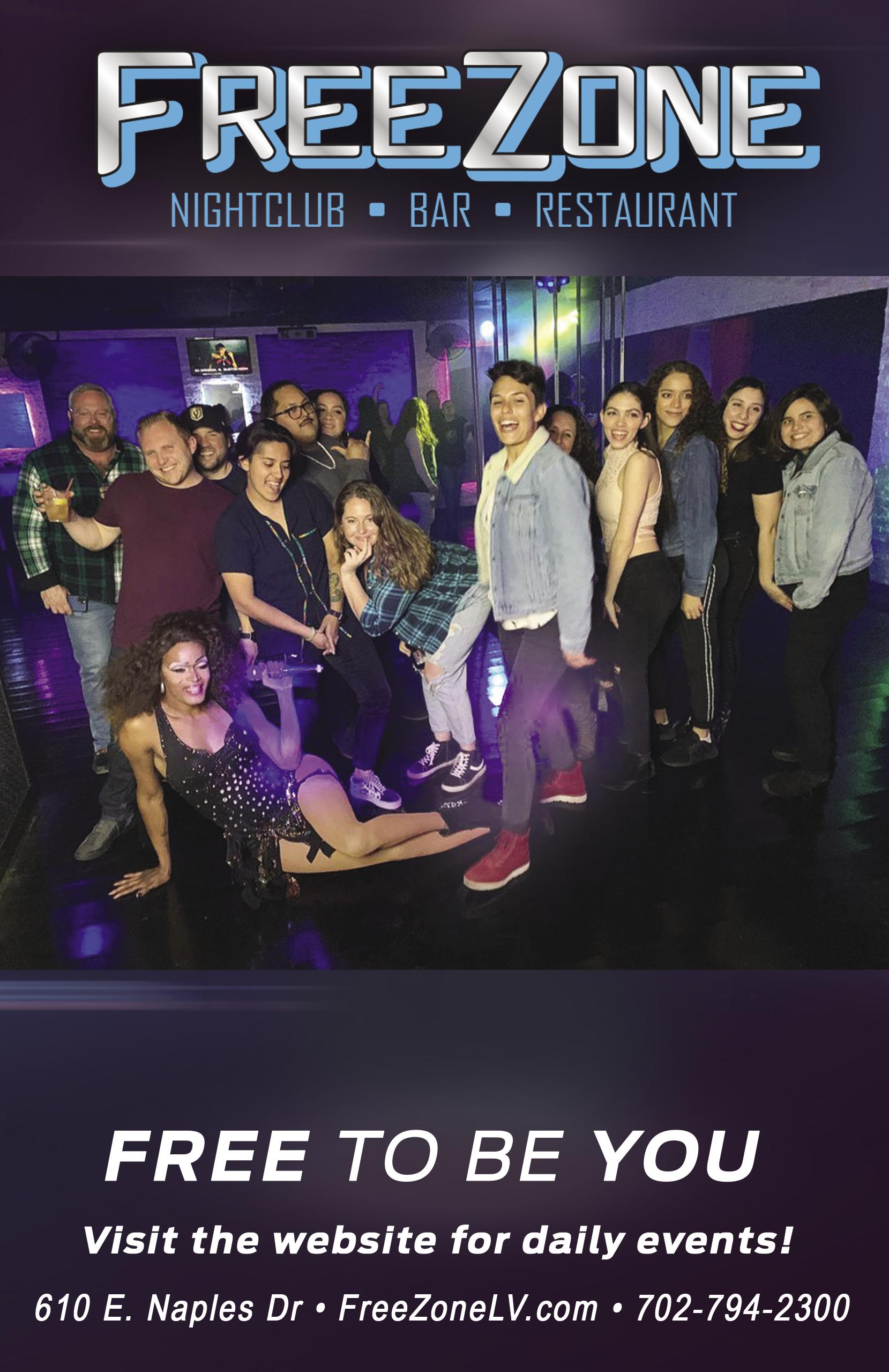
As a scholar, an educator, and a queer Latina, this show brought everything full circle for me. Agreeing to do this exhibit inspired me to stay in Southern Nevada as I sought a tenure-track job that would allow me to work at the small liberal arts college of my dreams. Moreover, conversations about their work and their relationship to it revealed common ground among Indigenous, Black, Latinx, Asian-American, and European-American transgender artists. Contemplating the final pieces and the artists’ statements created an inspiring and humbling narrative of relation and solidarity. I feel privileged to be in the room, still surprising myself with how it’s all been coming together.
As a tenure-track Communications professor in Nevada State College’s Data, Media, and Design Department, I proposed a special topics course, “Curation as Narrative,” which will cite the Indigenous, Black, people of color centric art shows curated over the past four years, many of which Weaving Our Cultures Arts Festival (WoCAF) cosponsored. I look forward to building a course centering on local artists and curators of color; I’ve learned a great deal about the art world since beginning to work with the Majorie Barrick Museum of Art in 2018.
Can you tell us more about the family history that brought you to this moment?
My mother and grandmother are both Puerto Rican. They came to the U.S. in the early 1960s following my mom’s dad who had come seeking work as part of the Operation Bootstrap generation of Puerto Ricans who migrated to the Midwest.
My grandmother was born in Puerto Rico months after the depression and was raised to be a mom and a wife. My mom grew up in Chicago and lived there until she retired to North Carolina in October. While she intended to get married and return to school, she was pregnant with my older brother within two months of marriage. So she finished her college degree after we were all adults.
I often think about where the women before me were at my age. In her late thirties, my mom was beginning her divorce from my dad. As a result of their separation, they sold the home I grew up in for the first ten years of my life. My grandmother was giving birth to my youngest uncle. While circumstances have delayed my dream of becoming a parent, I’ve lived in various parts of the U.S. before starting to teach full-time in the Vegas valley. Despite childhood hopes, I’ve built my career farther away from home than I ever imagined. As a child of the Caribbean, I jokingly say, I
have found an unlikely home in the desert. I’m grateful for what deviating against my planned life has taught me.
My years in the valley have been the first time I’ve felt whole in my work through the people I meet and the students I teach. When you and I first met, I was getting involved in Clexicon, which changed my life in various ways. Queer fandom paved the way for me to design a course solely focused on Queer Latinos in TV & film, which I will teach in the Spring of 2024. Spending so many years reinventing myself as an educator, an advocate, and a scholar because of the opportunities that I’ve come across and that people have provided me, I am now in the position to translate life’s lessons into courses I can teach at Nevada State College.
Tell me about your inclusion of the poem “Y Tu Abuela Dónde Está?” by Puerto Rican poet Fortunato Vizcarrondo.
I argued with my grandmother by embracing my skin color, and hair texture while taking up space as though I didn’t have to apologize for existing. She told me not to stay in the sun when I was three; she cut off all my hair without telling my mother to make it manageable. I still remember that day. I bring it up to disrupt the poem’s narrative because that poem is about hiding your blackness and mine since I was a child. I

bring “Y Tu Abuela Donde Esta” into conversation with my relationship with my grandmother to grapple with what so often we’re expected to hide, even when my skin color and name make it pretty difficult.
I know that my grandmother wanted what was best for me and wanted me to survive in society. So she thought that if I conformed as she did, I would be okay whenever she expected me to. I said no. Like many of us who grew up and or were born here, we spend a lot of time translating ourselves to our families. I chose to build a show around a photo of her posing with my mom as a baby because of how much the questions that drove my career helped me humanize and understand her better. Despite our differences, I respect the sacrifices she had made for her children and me so that I could defy everyone’s expectations, even hers.
Sharing the enlarged photo with my mother, on the other side of the wall where the picture of my mom holding me at about the same age she was in the older portrait with her mother, sparked powerful conversations. I’m still processing the stories I’ve learned and how they’ve helped with a better understanding of what it takes for so many of us to balance honoring and respecting where we come from while questioning the racist, homophobic cultural norms that attempt to limit the space we can occupy.
Speaking on physical traits and the discussion of hair, this seems to inspire some of the work by the selected featured artists such as Lisa Jarrett.
I had just donated all my straight irons, curling irons, and blow dryers when Lisa and I met to talk about the show. She and I talked about that and how not just our families regard our hair, but how society regards our hair, especially in light of how different genders romantically assign attractiveness to how we each wear our hair.
One of my colleagues is teaching a hair course in the spring because of how much hair care and hairstyles shape our everyday lives. Museum staff report how powerful Jarrett’s piece has been for folks. They sit with the Migration Studies series thinking through both her narrative and their own relationships with their hair and time. One of my own students at Nevada State reported being incredibly moved when they visited the piece. Being able to bring an artist who sparks critical thought among museum visitors…it’s been humbling.
As the child of an immigrant who was born and raised in Caracas, Venezuela, and as someone who identifies as LGBTQ+, I completely understand defying your family’s expectations and it’s very important to tell our stories.
It is incredible to see all these artists and see you give them visibility in a time where there is this force trying to move us back from the progress we have made.
As I was putting this exhibit together. I knew I wanted to have transgender artists talking about reproductive justice and family building.
We knew there was a potential for them to overthrow Roe vs Wade and I wanted to make sure that when we think of reproductive justice, not all people with uteruses are women, and not all women have uteruses. So, I was really excited when Chris Vargas agreed to be in the show because even though we just passed the gender-neutral bathroom policy in Nevada a couple of years back and it’s one of the few states in the region that isn’t aiming to criminalize supporting LGBT youth, that doesn’t necessarily mean Nevada’s progressive policies in the context of our region protect our libraries from having LGBT books banned or from the vicarious trauma of events such as the recent shooting at Club Q in Colorado Springs, CO.
We collaborated with local activists, Cozi LV, Frankie Perez, and Cristina Hernandez to host events to bring important conversations to the forefront. Frankie, Cristina, and I paneled a discussion of the film A Womb of Their Own in mid-October. CoZi LV will be hosting a second
zine-making workshop on the first Saturday in December. Attendees at these events are consistently asking how to navigate this politically turbulent climate or reflecting on what family means. In addition to these events, over a hundred attendees have filled out response cards reflecting on the healing power of choosing family and family invested in reconciliation and growth.
Museum staff and I revisit those cards, humbled by the healing power of the show. People see themselves reflected in the artists’ works and their stories, often seeing people like them beautifully displayed for the museum.
Many Latinx and Chicanx artists have been included and when I was researching the different artist websites, the Vegas-related ESTARDAS sign artwork fascinated me
and I came to realize that the creator Justin Favela is also being featured in this exhibit.
Justin Favela, who had been one of the first local artists I met through Marjorie Barrick Museum of Art Director Alisha Kerlin, has become one of my greatest teachers and best friends here. I will have an essay in the forthcoming book Fantasia/Fantasy, A Decade of Practice 20112021. In over four years of collaboration and friendship, I have learned a great deal about the art world and come to find more places in the Vegas valley to love.
After finalizing the artists, I noticed that about a third of the artists are Latino/Chicano. In terms of other demographic data, about half the artists are local or have local ties. As a first-time curator, the team efforts behind the show produced beautiful conversations with local and national artists invested in the same questions of history, memory, and healing intergenerational trauma. With each tour I give, I gain more insight into the organic conversations the show inspires in others. Each visit, by myself or with others, I contemplate the intentionality that brought artists and me together. Sharing taking up space and reclaiming narratives feels like a gift. It’s healing. In the face of so much uncertainty about the rights of queer, Indigenous, and/or immigrant families, we can come together and share our

stories. We choose to come together and create purpose beyond what the state ‘allows’ or ‘limits’.
Another artist, Gabriela Muñoz, has different types of artwork including videos and portraits like ‘Earth Tattoo’, and some of these created pieces are also permanent installations found at different locations. How did you choose what pieces were included? How did you decide how something is being displayed? Is that something that you’re involved with?

Yes, I was involved through as much as I could be. I picked the work of local artists, UNLV alum, and
students based on what I and or staff knew of their work. Nationally recognized artists like Gabriella Munoz and Las Hermanas Iglesias, the museum staff recommended.
When I saw their work and spoke with them, I knew why they would make perfect sense for the themes of the show. Many of the artists and I bonded over the show’s themes and the political concerns of the moment. It was more of a dialectic in saying we wanted this piece and either they would offer that piece or would suggest another piece.
I then worked with staff to map out where pieces would go and, once they started
coming in, worked with them again to reorganize them based on their actual sizes. Artists also let us know how they wanted their pieces displayed; some of them provided very detailed directions given the materials of their work. The engineering, attention to detail, and space that artists and museum staff exercise for each show, humbling to watch. By the completion of the install, the organic, networked solidarity I wanted the show to embody took a beautiful shape.
When a friend I made during grad school came to visit, she asked how I brought all these pieces together, and, for me, it was universal in the particular. These relationships, short- or

long-term I built with every artist. The way each of them reminded me of bits of home-home as in my past, home as in that place I can feel safe, home as in the place so many of our families had to leave to survive. To make a home here, as a guest on the lands of the Nuwuwi requires I give attention to imagining and building home with attention to the complementary injustices that keep us from being able to stay or, in the case of Indigenous, take up space on their ancestral lands.
Back to thinking through the technicalities of curation and design, it is important to note that the Marjorie Barrick Museum of Art has not been a museum for long. The Marjorie Barrick Museum of Art at UNLV has been a museum of art for a little over ten years. Under Alisha’s leadership, half of that time has been dedicated to curating shows and acquiring pieces that reflect the diversity of the Vegas Valley, a population NSC president Dr. Pollard often describes as the ‘new majority.’
My first inclination was to choose local artists because so often when we think of powerful artists, we don’t think of Vegas, and I wanted Vegas students, and Vegas valley community members to really get a glimpse of the richness and groundbreaking work of local artists. Alisha was like, “dream big” and I decided I would rather have most artists from the west
coast because we all had a lot on our plate.
That’s a lot of work for a staff of six people and while they have a plethora of volunteers one of the things I wanted to do was just to highlight the museum staff’s commitment to diversity and equity and uplifting local artists, while at the same time learning the tricks of the trade. Seeing everything and how far she has come from struggling to bring the ‘Axis Mundo’ exhibit, where you and I first met, to this museum and now the Barrick Museum of Art is not just a museum of art, but it’s a museum of art engaging in political themes of the moment.
Because of their painstaking efforts and consistent generosity, I didn’t want to overwork them. Attentive to the pricelessness of time and energy, I look forward to applying the lessons I’ve learned about the labor behind curating a show to the future courses I teach. I also look forward to writing more about how much these experiences and these relationships helped me bring long-forgotten dreams to fruition. Curating this show has helped me gain perspective as to how I want this next chapter of my teaching career to look. I have so many new dreams because of all I learned and all I healed in putting this show together.
Such work, while necessary, can often feel risky. I am
grateful the Marjorie Barrick Museum of Art took a chance on me.
Will your video art selections, like that of Chris Vargas, be on display on screens with headsets or closed captions?
Yes, screens with headsets and 2 of the 3 videos have their script on laminated sheets next to the videos. While institutions, like the Marjorie Barrick Museum of Art, invested in being accessible and need greater support to get there, we worked with what we had to choose a myriad of pieces that could engage with neurodiverse populations. We reached out to UNLV’s Disability Resource Center for font advice in making the exhibit the most accessible for neurodivergent students like those with dyslexia and students with visual impairments. So often when we think of art we think of a painting on a wall and maybe a sculpture, and so, but this show has a little bit of everything we could find. There are more ways to go and more support is needed to create shows that reach every potential member of an audience.
Anything, in particular, you want people to take away from this exhibit or anything that you want people to know about this project?
Three months after the opening, one of the first responses I received on

Instagram sticks out to me. Someone called the show “a brave and a safe space,”...”a hug.” For me, as I worry about LGBTIQGNC2S+ youth navigating states where they have to wait; where their stories are banned; as I contemplate what it means we won’t know the results of the Supreme Court case against the Indian Child Welfare Act, I hope people feel held here. I hope people walk away knowing, no matter what the supreme court, federal or state policies decide, the families they/we build with love, respect, tenderness, and faith matter.
Weeks after the midterm election, with the bill that could secure gay marriage rights’ protections for us not yet signed, with affirmative
action on trial, we have a lot of work ahead of us. With the lingering idea that overturning Roe V Wade aimed to allow ‘us’ to build families, I know that means little in light of the unregulated housing market, the impossibility of paying rent for an apartment on a forty-hour work week at minimum wage, and the limited financial support of all levels of public education.
Taking in the civil rights concerns that still plague us, I look forward to learning how our newly elected officials will echo the sentiments the Nevada State College community wrote on sidewalks the Monday after the CO shooting--you/we belong here; you/we are loved.

More generally, I hope this show helps highlight why human lives and our joy is
also at stake and how we think and perceive young people and communities of color have rights to their bodies, their stories, and the invaded, dispossessed lands of their ancestors.
I’m grateful that the Barrick Museum of Art and the artists trusted me with bits of their stories and their spirits. I am moved beyond words by how so many others have found love and healing on visiting the show; my heart is full with being able to share that with people who live, work, and love in the first place I have felt fully whole.
When: The exhibition is currently on view at the Marjorie Barrick Museum of Art at UNLV until January 28th, 2023. Entry to the museum is free and open to

the public Tuesday - Saturday, 10 a.m.- 5 p.m. Masks are recommended.
The closing reception will be 1/28/23; come visit to see what the curator and museum staff create with the audience response cards!
Where: The Marjorie Barrick Museum of Art is located in the heart of the University of Nevada, Las Vegas campus. The museum is easily accessed from the west side of campus at the intersection of Harmon Avenue and University Center Drive. Drive east on East Harmon Ave until the road enters the campus and terminates in a parking lot. The Museum will be on your right, next to a desert landscape garden.
About the Curator: Erika Abad, Ph.D. is an Assistant Professor of Communication at Nevada State College. A former faculty-in-residence for UNLV’s Interdisciplinary, Gender, and Ethnic Studies program, Dr. Abad has been living in the Las Vegas Valley since 2016. Dr. Abad has collaborated with the Marjorie Barrick Museum since 2018, when they documented visitor interaction with Mary Corey March’s Identity Tapestry installation and gave a related lecture titled, “Who are we and How do we Heal?” They have written on exhibits and artists’ work for Settlers and Nomads, Latinx Spaces, and Dry Heat. They have been featured on The Art People
Podcast, Latinos Who Lunch, and Seeing Color. You can follow them on IG/Twitter: @prof_eabad. This exhibit, inspired by “Mothers and Daughters in the US”, a course they created at UNLV, brings full circle the conversation of what it means to excavate the socio-political conditions of our foremothers to better understand why we exist in the world the way we do.
Abayomi Brownfield is a multidisciplinary artist who creates representations of Black futures grounded in African and Afro-Indigenous cultural practices and cosmologies. In 2021 she was an inaugural Roots Division Bay Area Black Artist Studio Fellow. Brownfield has a BA in African Decoloniality in Art & History from Mills College.
Justin Favela is a Las Vegas-based artist whose installations and sculptures manifest his interactions with American pop culture and the Latinx experience. Much of his oeuvre revolves around inventive reimaginings of piñatas. He has exhibited his work in venues across the United States, including the Sugar Hills Children’s Museum (NYC), the Museo de las Americas (CO), and the Phoenix Art Museum (AZ).
The artist and activist Fawn Douglas is an enrolled member of the Las Vegas Paiute Tribe. Her studio
practice includes painting, weaving, sculpture, dance, and other types of performance. Douglas tells stories in order to remember the past and ensure the stories of Indigenous peoples are heard in the present. She is the founder of Nuwu Art + Activism Studios, a studio, gallery, and event space in Las Vegas.
Noelle Garcia, a Chicagobased artist from the Klamath and Paiute tribes, focuses on themes of identity, family history, and recovered narratives. Her paintings, drawings, and sculptures have been exhibited in galleries and institutions across the United States. Garcia has earned awards and fellowships from various institutions such as the Smithsonian’s National Museum of the American Indian and the Nevada Arts Council. She received her MFA from UNLV in 2012.
Q’Shaundra James is a Las Vegas painter who creates contemporary portraits and depictions of historical figures with the aim of enabling Black Americans to envision themselves outside white America’s prescribed narrative. Her work has been exhibited in venues across Southern Nevada.
Lisa Jarrett is an artist and educator whose intersectional practice considers the politics of difference within a variety of settings. Jarrett is an Associate Professor of Community and Context Arts

BA in Film & Media Studies and is currently an MFA candidate at UNLV. Her work has been exhibited in Oklahoma, Nevada, Missouri, and France.
Hector Silva is a self-taught artist based in Los Angeles. He uses drawing as a way to explore themes of cultural identity, eroticism, and beauty, focusing on Latino street culture and queer visibility. His work has been exhibited in numerous venues, including the Museum of Latin American Art (CA), the Museum of Mexican American Art (IL), and the Autry Museum of the American West (CA).
Linda Garcia Merchant is a Public Humanities Data Librarian at the University of Houston’s MD Anderson Library, an award-winning filmmaker, and the co-founder of the Chicana Por Mi Raza Digital Memory Collective, a national oral history project documenting second-wave Latina feminists.
at Portland State University. She is co-founder and codirector of KSMoCA, the Harriet Tubman Middle School Center for Expanded Curatorial practice, and the art collective Art 25: Art in the 25th Century.
Las Hermanas Iglesias is a project-based collaboration between artists Lisa and Janelle Iglesias. As the children of Norwegian and Dominican immigrants, the sisters produce trans-

disciplinary work that explores issues of hybridity, social participation, and transnational identities. Individually, each sister has exhibited internationally and across the U.S. Sometimes they collaborate with their mother, Bodhild.
Keeva Lough uses video and performance to explore gender, social structures, and their effects on the body. She graduated from the University of Oklahoma in 2012 with a
The work of Gabriela Muñoz is rooted in her experiences as a migrant who lived in Arizona, undocumented, for more than a decade. Her practice is concerned with movements of social justice and racial equality. Muñoz’s work has been exhibited at the Scottsdale Museum of Contemporary Art (AZ), the University of Arizona Art Museum, and the U.S./Mexico border fence.
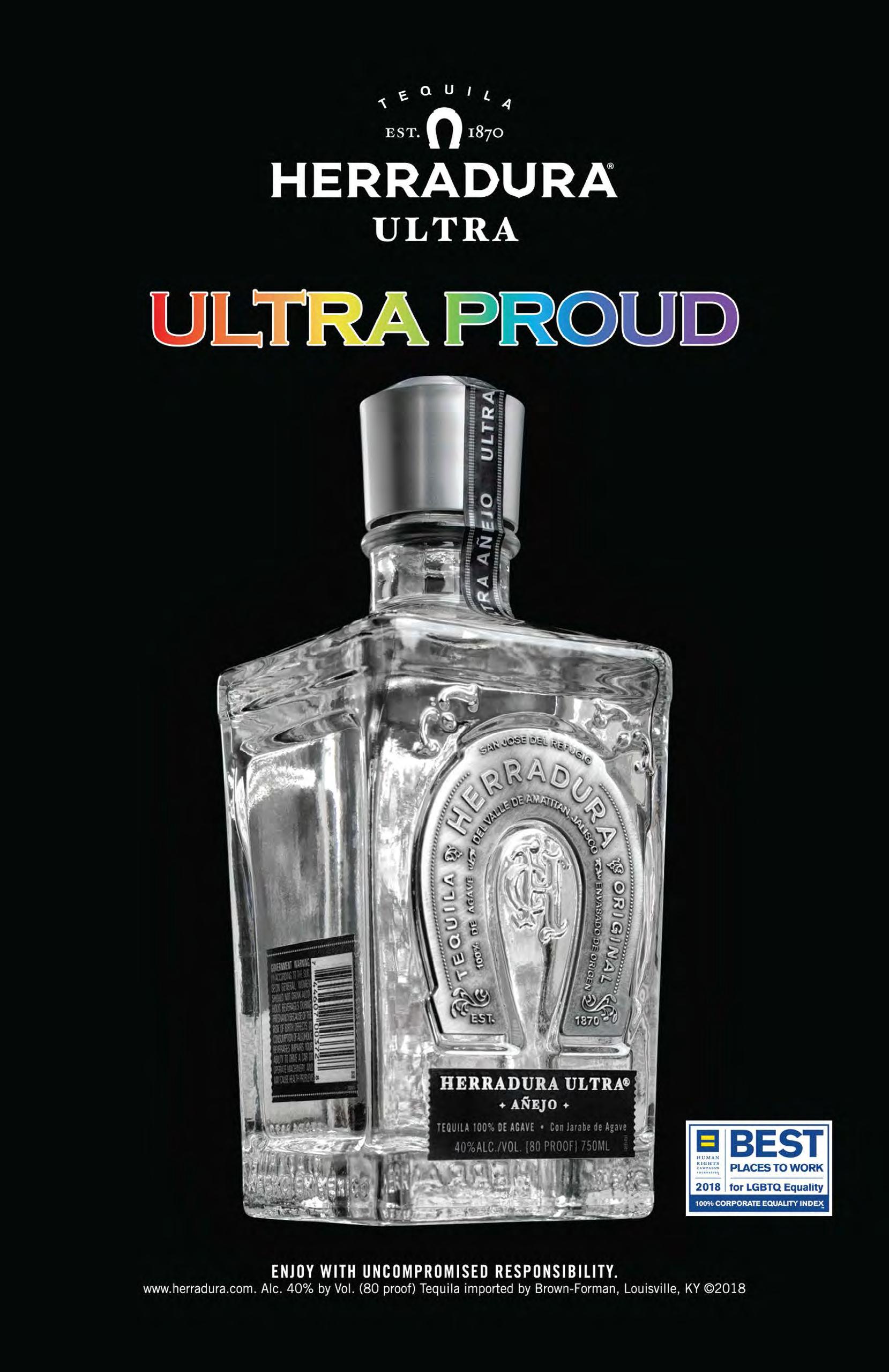
Jean Munson is a feminist Filipina activist, cartoonist, and podcaster from Guam who uses comic books to empower those who have been historically underrepresented and misrepresented by the medium. She is a graduate of UNLV and a co-founder of the Las Vegas comics company, Plot Twist Publishing. Her publications include Magic Glasses and Stretch Marks: a Psychological Autobiography.
Lyssa Park is a Las Vegasbased artist who explores narrative through illustration, books and hand-crafted objects, using a variety of approaches including penand-ink, collage, digital media, screen printing, risograph printing, and sculpture. She has a BFA in illustration from the California College of the Arts. Currently, she is an MFA candidate at UNLV.
Krystal Ramirez is an interdisciplinary artist whose work is centered around class, labor, and consumption of the brown body. She chooses materials that highlight impermanence and spirituality, hinting at the weightless and hallucinatory existence of immigrants with no history. Born and raised in Las Vegas, she is currently an MFA candidate in Art Practice at Stanford University.
Rose B. Simpson is a mixed-media artist living in Santa Clara Pueblo, New Mexico. Her work includes ceramic sculpture, metals, fashion, performance, music, installation, writing, and
custom cars. She received an MFA in Ceramics from the Rhode Island School of Design in 2011, and an MFA in Creative Non-Fiction from the Institute of American Indian Arts in 2018, which is collected in museums across the continent, and has exhibited internationally.
Lance L. Smith is a Las Vegas-based artist, illustrator, muralist, and teacher whose work often explores themes of loss, distortion, and liberatory practices. They have been featured in local and national venues, including the Marjorie Barrick Museum of Art, Nevada Humanities Gallery, and the Bellevue Botanical Garden (WA). Smith is the Director of Rogers Art Loft, an artist residency in downtown Las Vegas.
Chris E. Vargas is a video maker and interdisciplinary artist whose work deploys humor and performance in conjunction with mainstream idioms to explore the complex ways that LGBTQ+ people negotiate spaces for themselves within historical and institutional memory and popular culture. His work has been exhibited internationally, with screenings at the Tate Modern (UK), Palais de Tokyo (France), LACE (CA), and other venues. He is the Executive Director of the Museum of Transgender Herstory & Art, an ongoing conceptual project.
Fortunato Vizcarrondo Y Rodón was a musician and a poet. Born in Carolina, Puerto Rico, in 1895, he published
three books of poetry: Dinga y mandinga (1942), Primavera y otoñales (1961) and Sonetos puertorriqueños (1968). His poems were often recited and set to music. ¿Y Tu Abuela Donde Esta? – or ¿Y tu agüela, aonde ejtá? in the local dialect, he adopted for the poem’s fictional Afro-Puerto Rican speaker – has been recorded several times. Vizcarrondo died in 1977.
Xochil Xitlalli is a self-taught Las Vegas-based artist and activist who shares the ways of her Nahua ancestors through a variety of mediums. She works in painting, clay sculpture, jewelry, textiles, and digital arts. Recently she has focused on depicting Aztec astrological symbols, companions, and guides from her personal spiritual practice.
About The Weaving Our Cultures Arts Festival (WoCAF):
WoCAF is a powerful platform committed to generating more art events that highlight the work of local artists. In 2022, the Women of Color Arts Festival recognized the need to change its name to Weaving Our Culture Arts Festival to reflect the gender diversity of the collective and the artists it supports.
About the Architecture Studies Library:
The Architecture Studies Library, part of UNLV’s University Libraries, serves students and faculty in the School of Architecture and College of Fine Arts, with an emphasis on resources and information about

the professional fields of architecture, building and construction, urban planning, landscape architecture, and interior design. The ASL is also home to a Special Collections area devoted to the subjects of art, architecture, and design. Learn more about ASL at www.library.unlv.edu/arch.
The Marjorie Barrick Museum of Art believes everyone deserves access to art that challenges our understanding of the present and inspires us to create a future that holds space for us all. Located on the campus of one of the most racially diverse universities in the United States, we strive to create a nourishing environment for those who continue to be neglected by contemporary art museums, including BIPOC and LGBTQIA+ groups.
As the only art museum in the city of Las Vegas, we commit ourselves to leveling barriers that limit access to the arts, especially for firsttime visitors. To facilitate access for low-income guests we provide free entry to all our exhibitions, workshops, lectures, and community activities. Our collection of artworks offers an opportunity for researchers and scholars to develop a more extensive knowledge of contemporary art in Southern Nevada. The Barrick Museum is part of the College of Fine Arts at the University of Nevada Las Vegas (UNLV).

All of the museum’s galleries are accessible to wheelchair users and other visitors who cannot use stairs. Services such as sign language interpretation can be arranged. Please contact the museum to discuss your needs.
Parking: Visitors may park in metered, staff, and student spots free of charge after 7 pm on weekdays, 1 pm on Fridays, and all day Saturdays. Daily, weekly, or monthly permits can be purchased from Parking and Transportation Services.
Metered parking spaces for visitors can be found in the parking lot outside Barrick’s entrance, along East Harmon Ave, and in the lot behind the Lied Library. Other metered green zones are available in the Cottage Grove Avenue Parking Garage and parking areas throughout campus. Download the “PayByPhone Parking” app from Google Play or the iTunes app store. Contact: www.unlv.edu/barrickmuseum barrick.museum@unlv.edu 702-895-3381


Sustainability is the new black!
MODUS VIVENDI proudly presents the Organic Line, showing men on duty. It’s time for 100% sustainable underwear, made of organic cotton which is part of our responsiblity. We couldn’t imagine a more perfect pairing than to have these undies on men in nature. Retro aesthetic is mixed with a great dose of sexiness yet a kind of pure and effortless masculinity.
Unique and specially made pieces, knitted according to GOTS (Global Organic Textile Standard 5.0) and under dyeing, washing procedure, complied with the OCS (Organic Content Standard 2.0). Raw materials from certified organic farms, no harmful substances, in accordance to OEKO-TEX STANDARD 100. Sustainability is here to stay and MODUS VIVENDI wants to be part of it.
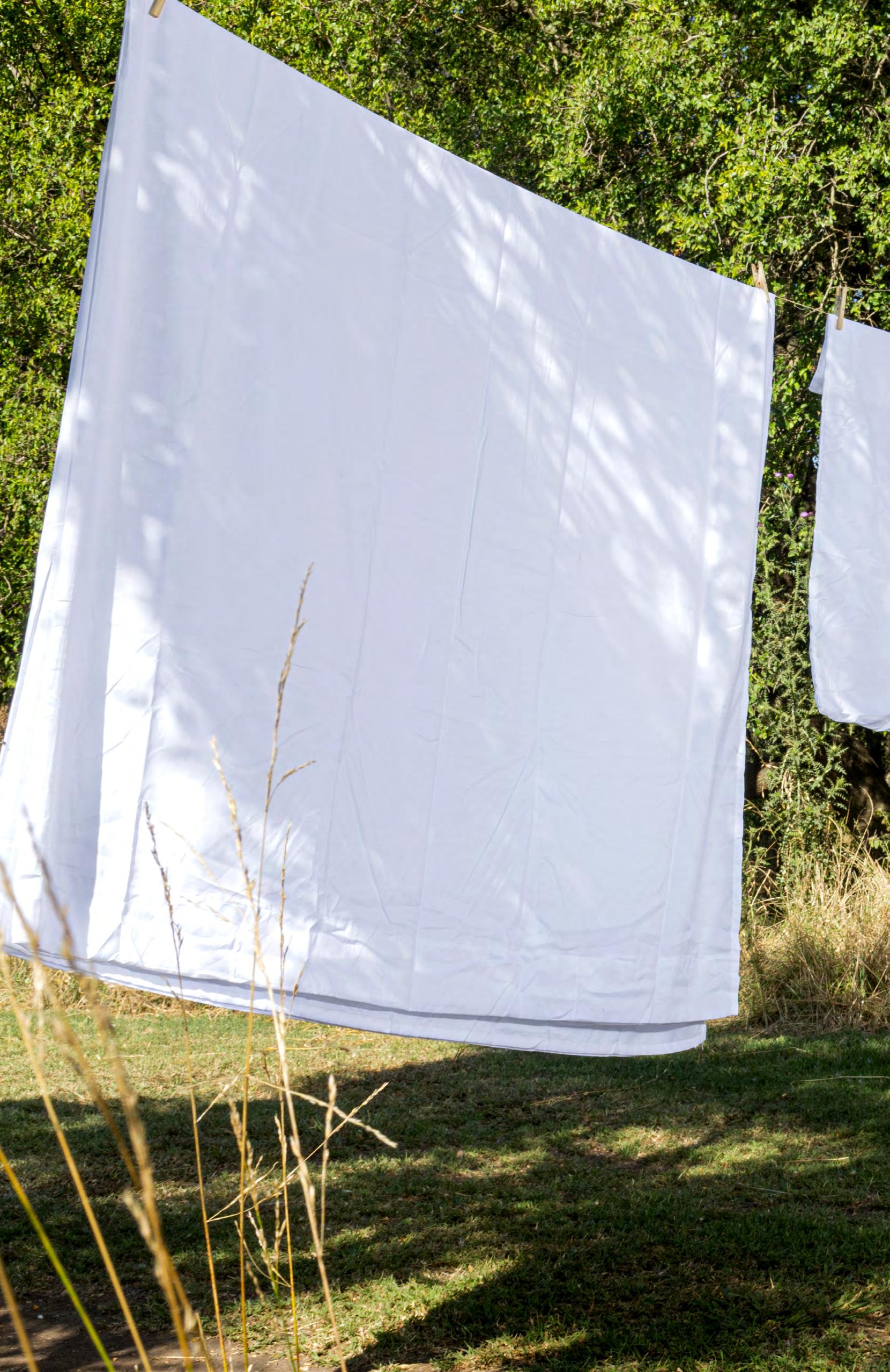
Who said that men can’t do the laundry? Organic Line is here to prove that vintage style can become chic and sexy in the modern world of fashion. So choose your comfort and your favorite organic piece of underwear, between optic white, classic black and dark khaki green. It is time we keep an extra eye on the planet. This line comprises of thongs, briefs, boxers, low cut briefs, jockstraps, tanga briefs, sweatshirts & tanktops.
(This fashion spread is part of a paid advertisment for Modus Vivendi)
 Photographer: Gastohn Barrios @gastohn.barrios / Models: Lucas Sabadini @lucsabadini & Pablo Garcilazo @capitanxpablo / Executive Production: Matias Santos / Videography: Estilo Wallo / Stylist: Martin Iglesias / Assistant: Marcelo Iglesias / Campaign: Organic Line / Location: Argentina
Photographer: Gastohn Barrios @gastohn.barrios / Models: Lucas Sabadini @lucsabadini & Pablo Garcilazo @capitanxpablo / Executive Production: Matias Santos / Videography: Estilo Wallo / Stylist: Martin Iglesias / Assistant: Marcelo Iglesias / Campaign: Organic Line / Location: Argentina



400 pages
It shall not pass your lips.
No, That Thing You Do Not Talk About is off-limits in all conversation, a non-topic when the subject surfaces. Truly, there are just certain things that are nobody’s business and in the new novel, “All the Broken Places” by John Boyne, some secrets must last a lifetime. She hated the idea that she would have to adjust to new neighbors.
Ninety-one-year-old Gretel Fernsby wasn’t so much bothered by new people, as she was by new noise. She hated the thought of inuring herself to new sounds, and what if the new tenants had children? That was the worst of all. Gretel never was much one for children, not her own and certainly not any living below her.
Once, there was a time when Gretel could imagine herself with many children. That was nearly eighty years ago, when she was in love with her father’s driver, Kurt. She thought about Kurt through the years – he had fallen out of favor with her father, and was sent elsewhere – and she wondered if he survived the war.
Her father didn’t, nor did her younger brother but Gretel
By: Terri Schlichenmeyerdidn’t think about those things. What happened at the “other place” was not her fault. She hadn’t known. She was innocent.
That was what she told herself as she and her mother fled to Paris. Gretel was fifteen then, and she worked hard to get rid of her German accent but not everyone was fooled by her bad French or her story. She was accosted, hated. As soon as her mother died, she sailed to Australia, where she lived with a woman who loved other women, until it became dangerous there, too. She practiced her English and moved to London where she was married, widowed, and now she had to get used to new neighbors and new sounds and new ways for old secrets to sneak into a conversation...
Okay, clear your calendar. Get “All the Broken Places” and just don’t make any plans, other than to read and read and read.
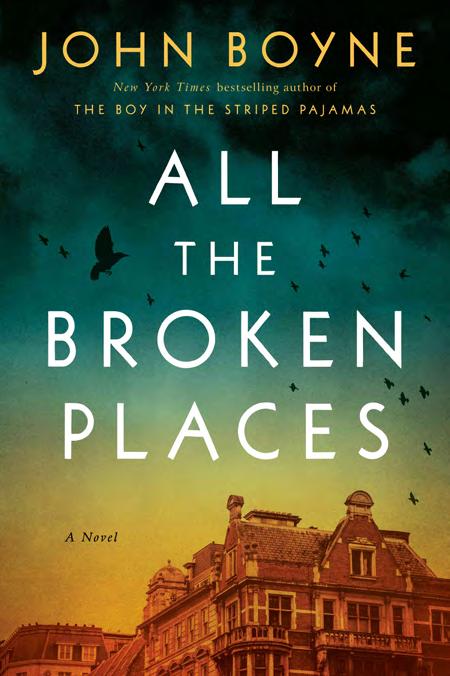
The very first impression you get of author John Boyne’s main character, Gretel, is that she’s grumpy, awful, and nasty. With the many bon mots she drops, however, the feeling passes and it’s sometimes easy to almost like her – although it’s clear that she’s done some vile things in her lifetime, things that emerge slowly as the horror of her story dawns. Then again, she professes to dislike children, but (no spoilers here!) she doesn’t, not really, and that makes her seem like someone’s sweet old grandmother. ‘Tis a conundrum.
Don’t let that fool you, though. Boyne has a number of Gretelsized roadside bombs planted along the journey that is this book. Each ka-boom will hit your heart a little harder. This is a somewhat-sequel to “The Boy in the Striped Pajamas,” but you can read it alone. Do, and when you finish, you’ll want to immediately read it again, to savor anew. Indeed, “All the Broken Places” should not pass your fingertips.
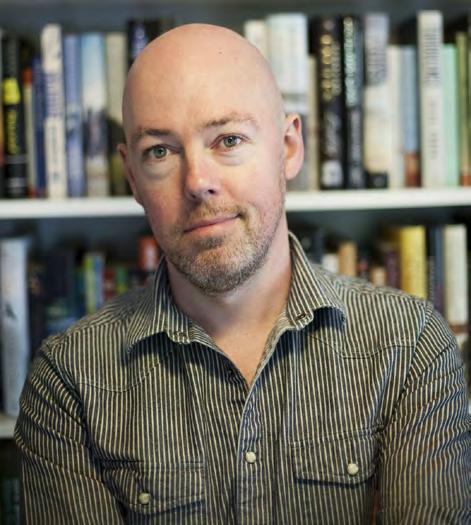
“All


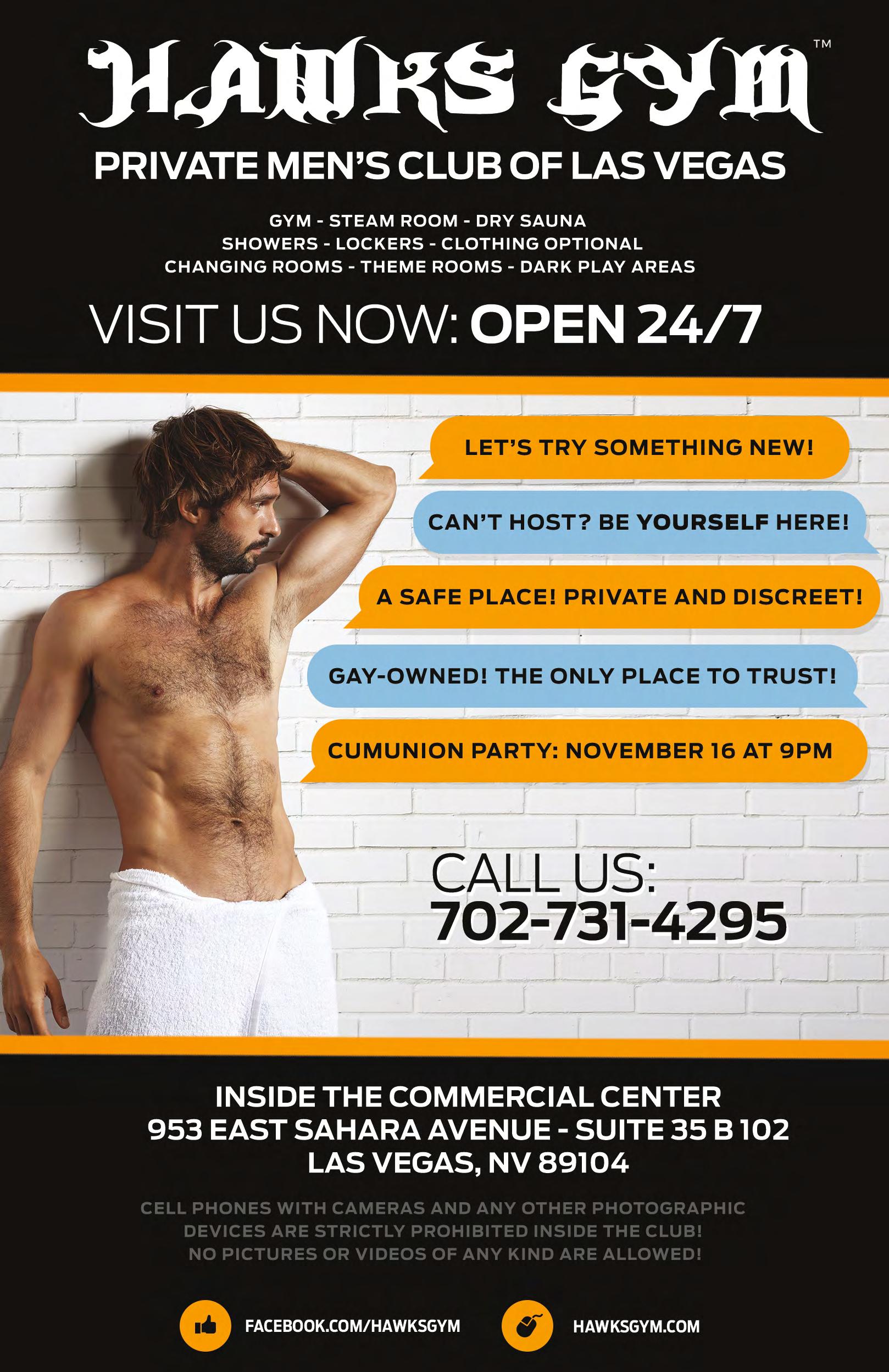
o a f u
S e D h u o d a v e u o B r u a c Queensridge
South Fort Apache Road
w
y a W n a p a C E
h u o S
y W n a p C
d a o R rr
v r A y
e e S e a T ka n ian Way
Roy Horn Way Spring Mountain Road
Sahara Avenue We r F st Twain Avenue ank Sina
M n THE PHOENIX

Desert Inn Road tr v A a D e e r S e r ive
Tropicana Avenue West Tropicana Avenu D n t a M n a e D e e v a e D Charleston Heights Chinatown CHARLIES
r a v e u o B D n a rive FLEX 15 15 215
Warm Spring


What are sexually transmitted diseases (STDs)?
STDs are diseases that are passed from one person to another through sexual contact. These include chlamydia, gonorrhea, genital herpes, human papillomavirus (HPV), syphilis, and HIV. Many of these STDs do not show symptoms for a long time. Even without symptoms, they can still be harmful and passed on during sex.
How are STDs spread?
You can get an STD by having vaginal, anal or oral sex with someone who has an STD. Anyone who is sexually active can get an STD. You don’t even have to “go all the way” (have anal or vaginal sex) to get an STD. This is because some STDs, like herpes and HPV, are spread by skinto-skin contact.
How common are STDs?
STDs are common, especially among young people. There are about 20 million new cases of STDs each year in the United States. About half of these infections are in people between the ages of 15 and 24. Young people are at greater risk of getting an STD for several reasons:
• Young women’s bodies are biologically more prone to STDs.
• Some young people do not get the recommended STD tests.
• Many young people are hesitant to talk openly and honestly with a doctor or nurse about their sex lives.
• Not having insurance or transportation can make it more difficult for young people to access STD testing.
• Some young people have more than one sex partner.
What can I do to protect myself?
• The surest way to protect yourself against STDs is to not have sex. That means not having any vaginal, anal, or oral sex (“abstinence”). There are many things to
consider before having sex. It’s okay to say “no” if you don’t want to have sex.
• If you do decide to have sex, you and your partner should get tested for STDs beforehand. Make sure that you and your partner use a condom from start to finish every time you have oral, anal, or vaginal sex. Know where to get condoms and how to use them correctly. It is not safe to stop using condoms unless you’ve both been tested for STDs, know your results, and are in a mutually monogamous relationship.
• Mutual monogamy means that you and your partner both agree to only have sexual contact with each other. This can help protect against STDs, as long as you’ve both been tested and know you’re STD-free.
• Before you have sex, talk with your partner about how you will prevent STDs and pregnancy. If you think you’re ready to have sex, you need to be ready to protect your body. You should also talk to your partner ahead of time about what you will and will not do sexually. Your partner should always respect your right to say no to anything that doesn’t feel right.
• Make sure you get the health care you need. Ask a doctor or nurse about STD testing and about vaccines against HPV and hepatitis B.
• Girls and young women may have extra needs to protect their reproductive health. Talk to your doctor or nurse about regular cervical cancer screening, and chlamydia and gonorrhea testing. You may also want to discuss unintended pregnancy and birth control.
• Avoid mixing alcohol and/or recreational drugs with sex. If you use alcohol and drugs, you are more likely to take risks, like not using a condom or having sex with someone you normally wouldn’t have sex with.
If you choose to have sex, know how to protect yourself against sexually transmitted diseases (STDs).
If I get an STD, how will I know?
What are sexually transmitted diseases (STDs)?
STDs are diseases that are passed from one person to another through sexual contact. These include chlamydia, gonorrhea, genital herpes, human papillomavirus (HPV), syphilis, and HIV. Many of these STDs do not show symptoms for a long time. Even without symptoms, they can still be harmful and passed on during sex.
Many STDs don’t cause any symptoms that you would notice. The only way to know for sure if you have an STD is to get tested. You can get an STD from having sex with someone who has no symptoms. Just like you, that person might not even know he or she has an STD.
tell your partner before you have sex. Although it may be uncomfortable to talk about your STD, open and honest conversation can help your partner make informed decisions to protect his or her health.

If I have questions, who can answer them?
• If you do decide to have sex, you and your partner should get tested for STDs beforehand. Make sure that you and your partner use a condom from start to finish every time you have oral, anal, or vaginal sex. Know where to get condoms and how to use them correctly. It is not safe to stop using condoms unless you’ve both been tested for STDs, know your results, and are in a mutually monogamous relationship.
Where can I get tested?
You can get an STD by having vaginal, anal or oral sex with someone who has an STD. Anyone who is sexually active can get an STD. You don’t even have to “go all the way” (have anal or vaginal sex) to get an STD. This is because some STDs, like herpes and HPV, are spread by skin-to-skin contact.
There are places that offer teen-friendly, confidential, and free STD tests. This means that no one has to find out you’ve been tested. Visit GetTested to find an STD testing location near you.
If you have questions, talk to a parent or other trusted adult. Don’t be afraid to be open and honest with them about your concerns. If you’re ever confused or need advice, they’re the first place to start. After all, they were young once, too.
• Mutual monogamy means that you and your partner both agree to only have sexual contact with each other. This can help protect against STDs, as long as you’ve both been tested and know you’re STD-free.
STDs are common, especially among young people. There are about 20 million new cases of STDs each year in the United States. About half of these infections are in people between the ages of 15 and 24. Young people are at greater risk of getting an STD for several reasons:


Your doctor can prescribe medicine to cure some STDs, like chlamydia and gonorrhea. Other STDs, like herpes, can’t be cured, but you can take medicine to help with the symptoms.
Talking about sex with a parent or another adult doesn’t need to be a one-time conversation. It’s best to leave the door open for conversations in the future.
• Before you have sex, talk with your partner about how you will prevent STDs and pregnancy. If you think you’re ready to have sex, you need to be ready to protect your body. You should also talk to your partner ahead of time about what you will and will not do sexually. Your partner should always respect your right to say no to anything that doesn’t feel right.
• Young women’s bodies are biologically more prone to STDs.
• Some young people do not get the recommended STD tests.
It’s also important to talk honestly with a doctor or nurse. Ask which STD tests and vaccines they recommend for you.
• Make sure you get the health care you need. Ask a doctor or nurse about STD testing and about vaccines against HPV and hepatitis B.
• Many young people are hesitant to talk openly and honestly with a doctor or nurse about their sex lives.
• Not having insurance or transportation can make it more difficult for young people to access STD testing.
• Some young people have more than one sex partner
What can I do to protect myself?
If you are ever treated for an STD, be sure to finish all of your medicine, even if you feel better before you finish it all. Ask the doctor or nurse about testing and treatment for your partner, too. You and your partner should avoid having sex until you’ve both been treated. Otherwise, you may continue to pass the STD back and forth. It is possible to get an STD again (after you’ve been treated), if you have sex with someone who has an STD.
Where can I get more information? CDC
• Girls and young women may have extra needs to protect their reproductive health. Talk to your doctor or nurse about regular cervical cancer screening, and chlamydia and gonorrhea testing. You may also want to discuss unintended pregnancy and birth control.
• Avoid mixing alcohol and/or recreational drugs with sex. If you use alcohol and drugs, you are more likely to take risks, like not using a condom or having sex with someone you normally wouldn’t have sex with.
What happens if I don’t treat an STD?
• The surest way to protect yourself against STDs is to not have sex. That means not having any vaginal, anal, or oral sex (“abstinence”). There are many things to consider before having sex. It’s okay to say “no” if you don’t want to have sex.
Some curable STDs can be dangerous if they aren’t treated. For example, if left untreated, chlamydia and gonorrhea can make it difficult— or even impossible—for a woman to get pregnant. You also increase your chances of getting HIV if you have an untreated STD. Some STDs, like HIV, can be fatal if left untreated.
What if my partner or I have an incurable STD?
Some STDs, like herpes and HIV, aren’t curable, but a doctor can prescribe medicine to treat the symptoms.
If you are living with an STD, it’s important to
How You Can Prevent Sexually Transmitted Diseases www.cdc.gov/std/prevention/ Teen Pregnancy https://www.cdc.gov/ teenpregnancy/teens/ index.htm
CDC-INFO Contact Center 1-800-CDC-INFO (1-800-232-4636) Contact wwwn.cdc.gov/dcs/ ContactUs/Form HealthFinder.gov STD Testing: Conversation Starters https://healthfinder.gov/ HealthTopics/ Category/health-conditions-and-diseases/ hiv-and-other-stds/std-testing-conversationstarters
American Sexual Health Association Sexual Health and You http://www.iwannaknow.org/ teens/ sexualhealth.html

HIV is a virus that attacks the body’s immune system.It is usually spread by anal or vaginal sex or sharing syringes with a person who has HIV. The only way to know you have HIV is to be tested. Everyone aged 13-64 should be tested at least once, and people at high risk should be tested at least once a year. Ask your doctor, or visit gettested.cdc.gov to find a testing site. Without treatment, HIV can make a person very sick or may even cause death. If you have HIV, start treatment as soon as possible to stay healthy and help protect your partners. Nevada is the fifth highest state in the


ADDRESS 1: 280 S. Decatur Blvd. Las Vegas, NV 89107
HOURS: Monday – Friday 8 a.m. – 4:30 p.m. (closed 12 – 1 p.m.)
ADDRESS 2: 4201 W. Washington Ave. Las Vegas, NV 89107
HOURS: Monday – Wednesday 9 a.m. – 2:00 p.m.
Clients seeking treatment at the Sexual Health Clinic should know that the Health District is required to report cases involving assault or abuse to appropriate agencies.
HIV Testing: HIV antibody testing is a simple blood test performed by a trained professional. This procedure is strictly confidential. Counseling regarding the meaning of the test and its result take place before the actual testing to ensure you understand HIV infection and the testing procedure.
HIV testing procedure: Blood Test – Blood drawn from a vein is tested for HIV antibodies. This test is available at the Sexual Health Clinic (280 S. Decatur Blvd. Las Vegas, NV 89107 ), Monday through Friday 8 a.m. to 4 p.m. Please call (702) 759-0702 for more information.
If you have questions, contact the clinic by phone at (702) 759-0702 or by email at SexualHealth@snhd.org






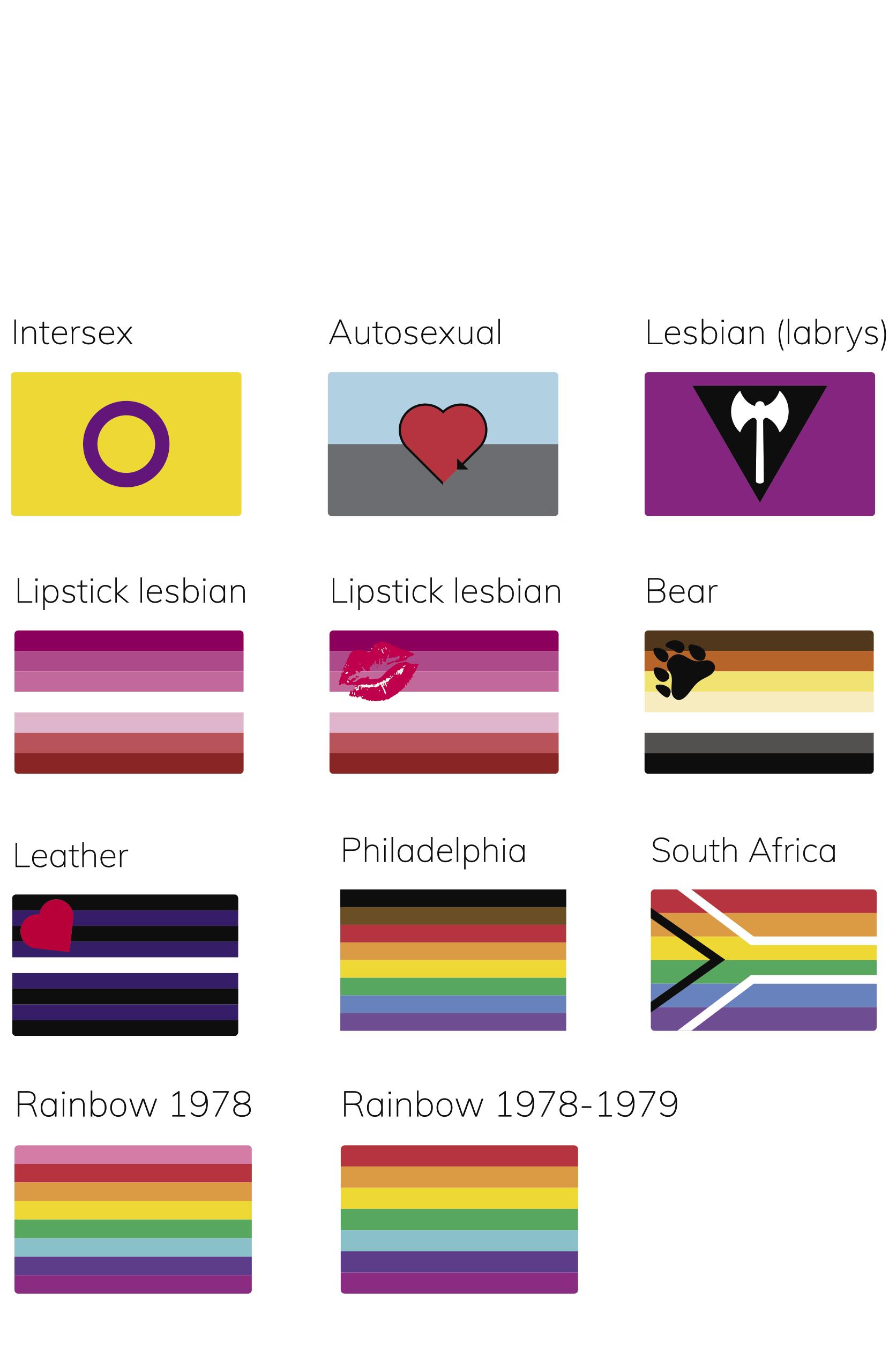













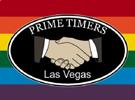







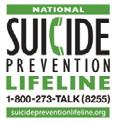






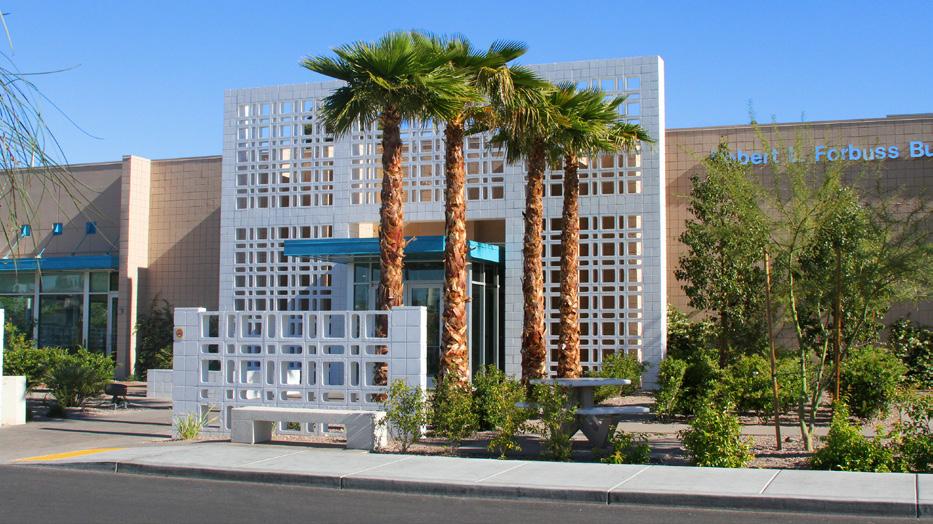




www.afanlv.org Aid for AIDS of Nevada (AFAN) provides support and advocacy for adults and children living with and affected by HIV/AIDS in Southern Nevada. AFAN works to reduce HIV infection through prevention and education to eliminate fear, prejudice and the stigma associated with the disease.


